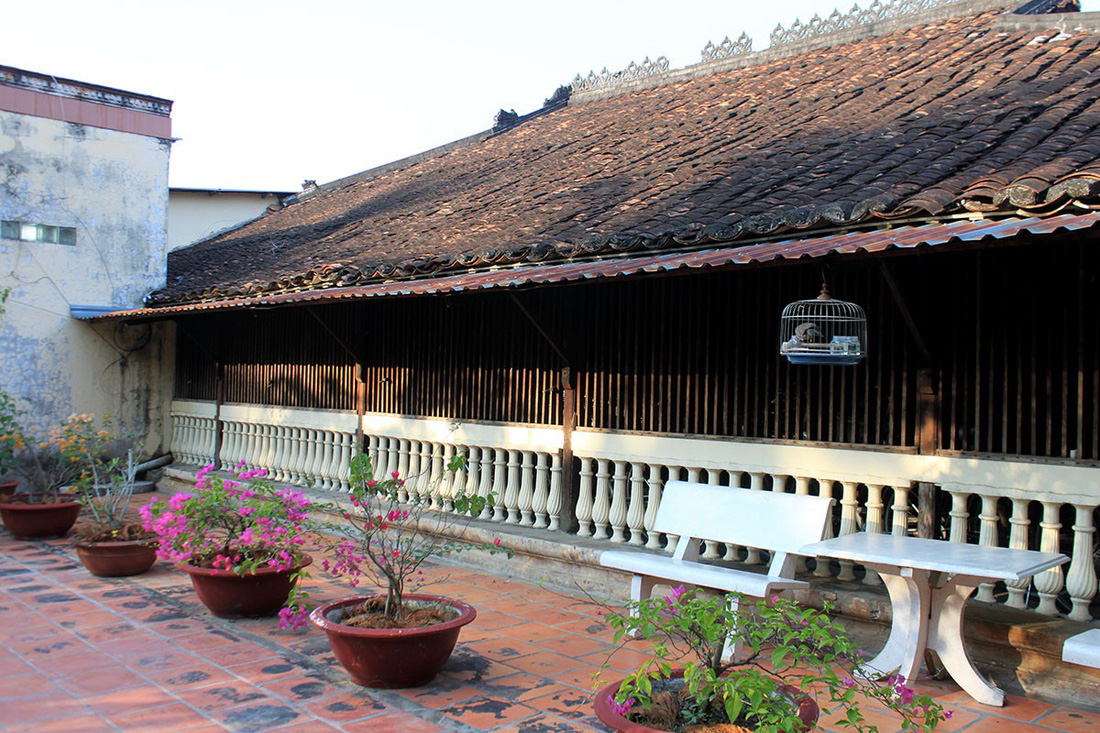The village is located by the Ca Be River in Tien Giang, a province in the Mekong Delta of southwestern Vietnam.
Roads leading up to the village are surrounded with green trees and growing fruits.
Every house has a front porch with a newly blossomed apricot tree waiting for the Lunar New Year, also known as Tet holidays, one of the biggest celebrations every year in Vietnam.
 |
| Roads leading to the village are surrounded by trees. Photo: Tuoi Tre |
Apricot blossoms are the most common houseplants on display during this period of time as it is widely believed that the flourishing of the plant indicates a household’s prosperity in the upcoming year.
The river is covered in shadows of the big red-leafed Idian almond trees, commonly found in the area, while the banks of the river are covered with golden trumpet flowers.
In other ancient villages in Vietnam such as Duong Lam Village in Hanoi or Phuoc Tich Village in Hue City, the old houses usually lie next to each other.
 |
| An Indian-almond tree is located by the river. Photo: Tuoi Tre |
However, Dong Hoa Hiep Village distinguishes itself by having the houses scattered across the village with green trees, yards, and grass surrounding them as if they were all in one big beautiful national park.
Currently, there are seven ancient houses from 150 to 220 years old, and 29 ancient houses of 80 to 100 years old in Dong Hoa Hiep.
One of the most highly recommended ancient houses would be Mr. Xoat’s ancient house located in Thach Hamlet.
 |
| The fence is covered with golden trumpet flowers. Photo: Tuoi Tre |
This is the oldest house in the village dating back to 1818, turning 200 years old this year.
The house has a Western exterior design but traditional Vietnamese interior decor.
The interior design is a perfect combination of the one commonly found in Hue, Vietnam’s former capital, and in southern villages.
Currently the sixth generation is living there.
 |
| In Mr. Xoat’s ancient accommodation, the doors are carefully, intricately and beautifully carved. Photo: Tuoi Tre |
Another well-known ancient house in the area is Mr. Kiet’s house in Phu Hoa Hamlet.
The house is a lot more occupied and livelier as more people live in it.
Unlike Mr. Xoat’s house, this ancient accommodation bears a design typical of the northern part of Vietnam with five compartments, three roofs and many pillars and poles made of expensive wood.
When the house was built in 1838, it was considered one of the greatest, most breathtaking residences in the area.
 |
| Mr. Kiet’s ancient house’s design is more typical of northern Vietnam. Photo: Tuoi Tre |
There are many other ancient houses in the village, each of which has its own impressive features.
For instance, Mr. Tong’s ancient house is surrounded by golden trumpet flowers with long-lived apricot blossoms.
Mr. Vo’s ancient house has a brown roof with ancient wooden sofas that have turned dark over the time.
 |
| In Mr. Kiet’s house, fruits are grown and collected, making the place livelier. Photo: Tuoi Tre |
Even though the houses are located in different hamlets and seem scattered across the village, most are in a radius of not more than two kilometers.
Hence, the tourists only need to commute by bike or on foot around the village to see the houses.
 |
| There are many pillars and poles made of expensive wood in Mr. Kiet’s house. Photo: Tuoi Tre |
 |
| Mr. Tong’s house hiding behind a fence covered with golden trumpet flowers. Photo: Tuoi Tre |
 |
| An old sofa has turned dark in Mr. Vo’s ancient house. Photo: Tuoi Tre |
 |
| One of the ancient houses in the village, built in 1938. The design is a combination of Western and Eastern architecture. Photo: Tuoi Tre |
 |
| The interior of one of the ancient houses. Photo: Tuoi Tre |
Like us on Facebook or follow us on Twitter to get the latest news about Vietnam!















































